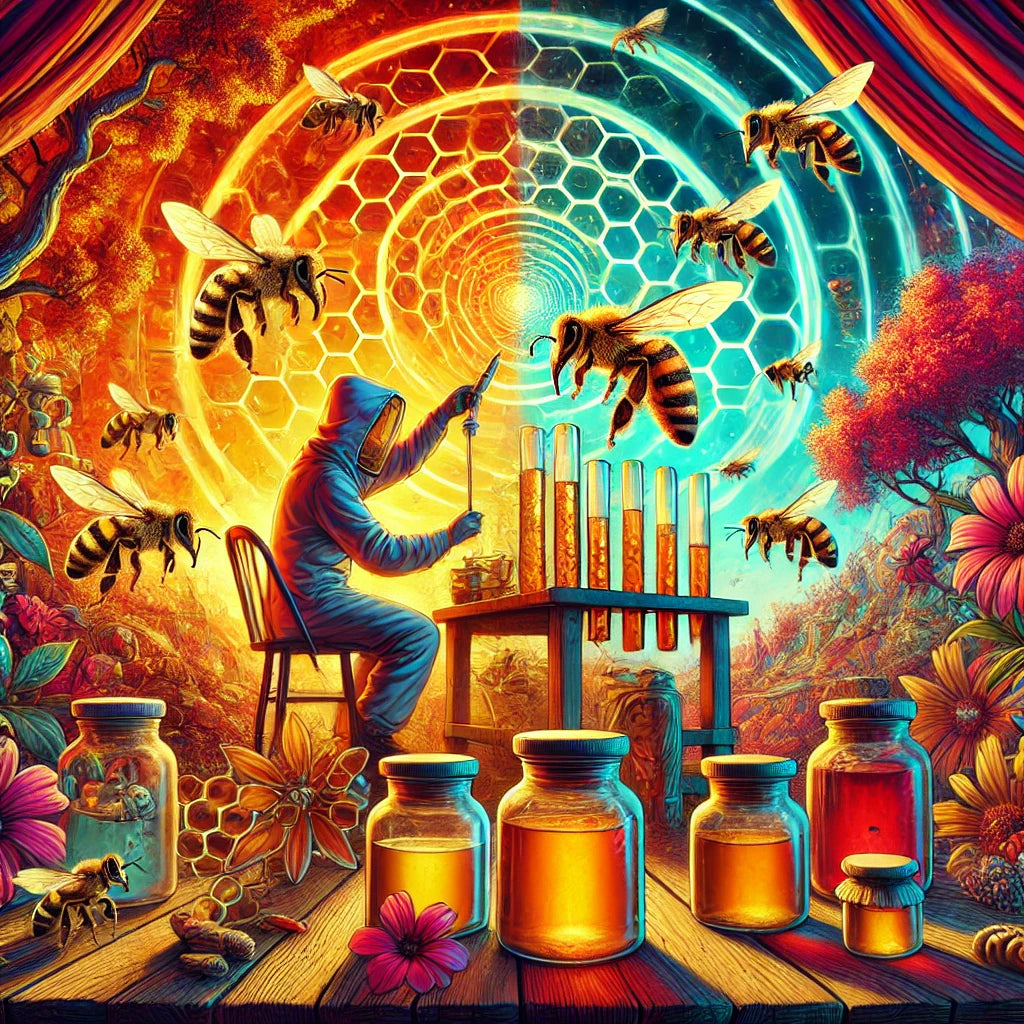Honey and bee venom are two fascinating substances produced by honeybees. While honey is renowned for its sweet taste and health benefits, bee venom is known for its potent sting. Both substances hold significant importance in nature and human health.
Unlike spraying, honey is collected, and bee venom is injected through stings. Understanding these natural products' properties and uses can provide insights into their unique roles and benefits.
This article delves into the production, benefits, and potential dangers of honey and bee venom, emphasizing their intriguing nature and applications.
The Nature of Honey and Bee Venom
Bees produce honey and bee venom through complex processes. Honey is created from nectar collected by bees, which is then transformed and stored in the hive. Bee venom, on the other hand, is a defensive secretion used by bees to protect their colony. These substances are essential for the survival and health of bee colonies.
The life cycle of bees illustrates how bees develop and contribute to their hive. Additionally, bees play a crucial role in agriculture, highlighting why honeybees are vital to agriculture.
How Honey is Made and Utilized
Honey production begins with bees collecting nectar from flowers. This nectar undergoes a transformation process inside the hive, turning into honey. The benefits of honey are vast, ranging from its use in culinary arts to its medicinal properties. Honey is a natural sweetener, rich in antioxidants and beneficial enzymes.
It is commonly used to treat wounds, soothe sore throats, and improve overall health. The benefits of bees extend beyond honey production, as they also contribute to pollination, which is essential for crop production.
The Venom of Honey Bee: Production and Injection
The venom of honey bee is produced in specialized glands and delivered through a sting. When a bee stings, it injects venom into the target, causing pain and inflammation. The venom contains various enzymes and proteins that affect the victim's cells and tissues.
This mechanism helps protect the bee colony from threats. Understanding the honey bee swarms behavior can also provide insights into bee defense strategies and colony dynamics.
Benefits of Honey and Bee Venom
Honey and bee venom offer numerous health benefits. Honey is known for its antibacterial and anti-inflammatory properties, making it a popular natural remedy. Bee venom, used in apitherapy, can help treat conditions like arthritis and multiple sclerosis.
Scientific studies have shown that bee venom can reduce inflammation and pain. To start exploring these natural remedies, consider learning how to start a bee farm. For high-quality bee products, visit Swarmcommander, a trusted source for beekeeping supplies.
Potential Dangers and Allergic Reactions
Despite their benefits, honey and bee venom can pose risks. Bee stings can cause severe allergic reactions, known as anaphylaxis, which require immediate medical attention. Symptoms include swelling, difficulty breathing, and hives.
It is crucial to know how to respond to bee stings and have emergency treatment available. People allergic to bee stings should take precautions to avoid exposure. Understanding the potential dangers and knowing how to manage allergic reactions is essential for safety when dealing with bees.
Honey and Bee Venom in Modern Medicine
Honey and bee venom have found applications in modern medicine. Honey is used in wound care for its antibacterial properties, promoting faster healing. Bee venom therapy, or apitherapy, is used to treat autoimmune diseases and chronic pain conditions.
Research continues to explore new medical uses for these natural substances. Innovations in bee venom extraction and application methods are enhancing their therapeutic potential. For instance, bee trap attractants are developed to manage bee populations safely.
Environmental Impact of Bees and Their Products
Bees play a crucial role in the ecosystem, contributing to the pollination of many crops and wild plants. The health of bee populations directly impacts honey and venom production. Environmental threats such as pesticides, habitat loss, and climate change pose risks to bees. Conservation efforts aim to protect and support bee populations.
For those interested in beekeeping, understanding bee hive relocation and using beetle traps for beehives can help maintain healthy hives.
Equip Your Hive for Success with Swarm Commander's Products!
Honey and bee venom are powerful natural substances with significant benefits and potential dangers. Understanding their properties and applications can help us appreciate their value and use them responsibly. As we explore these natural remedies, it is essential to support bee conservation efforts to ensure their continued availability.
By learning more about beekeeping and using products from trusted sources like Swarmcommander, we can contribute to the sustainability of bee populations and their valuable products.
Frequently Asked Questions About Honey and Bee Venom
Q1. What are the primary uses of honey in medicine?
Honey is used for its antibacterial and anti-inflammatory properties, particularly in wound care and sore throat relief.
Q2. How is bee venom collected for medical purposes?
Bee venom is collected using specialized devices that stimulate bees to release venom without harming them.
Q3. What should you do if you have an allergic reaction to a bee sting?
Seek immediate medical attention if you experience severe allergic reactions such as swelling, difficulty breathing, or hives.
Q4. Can honey and bee venom be used together in treatments?
Yes, some therapies combine honey and bee venom to enhance their medicinal effects, particularly in treating inflammation and pain.
Q5. Why are bees important for the environment?
Bees are vital for pollination, which is essential for the growth of many crops and wild plants, supporting biodiversity and food production.



